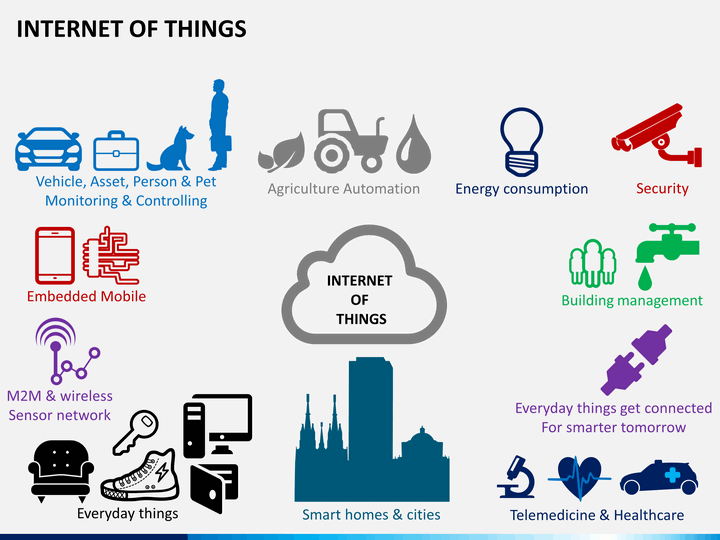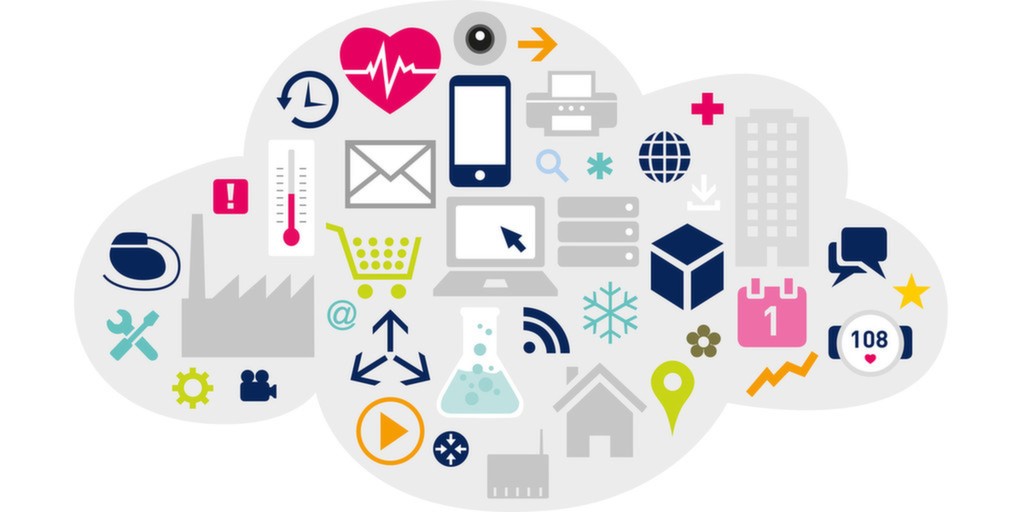How life is enhanced and simplified by connecting our possessions to the Cloud – The Connected Devices Laboratory at Brigham Young University .
You can find sensors here and development boards here that you can use to build your IoT Project.
Internet of Things (IoT) is the network of devices and in general things that are connected together and communicating with each other to perform certain tasks, without requiring human-to-human or human-to-computer interaction. These IoT systems are networked together usually by a wireless protocol such as WiFi, Bluetooth, 802.11.4, or a custom communication system.
The concept wasn’t named until 1999, the Internet of Things has been in development for decades. The first internet connected appliance was a Coke machine at Carnegie Melon University in the early 1980s. The programmers could connect to the machine over the Internet, check the status of the machine and determine whether or not there would be a cold drink awaiting them, should they decide to make the trip down to the machine.
The phrase “Internet of Things” was first coined by technologist Kevin Ashton way back in 1999, when he used it to describe how data captured by humans would lead to a revolution once computers started generating and collecting data by themselves without any human input. Since then, the vision of the Internet of Things has evolved due to a convergence of multiple technologies, ranging from wireless communication to the Internet and from embedded systems to micro-electromechanical systems (MEMS).
What exactly is the “Things” in “Internet of Things”?
Any device that can be embedded with electronics, software, sensors to communicate with other device is “Things”.
A Thing, in the Internet of Things, can be a person with a heart monitor implant, a farm animal with a biochip transponder, an automobile that has built-in sensors to alert the driver when tire pressure is low — or any other natural or man-made object that can be assigned an Internet Protocol address (IP address) and provided with the ability to transfer data over a network. These devices collect useful data with the help of various existing technologies and then autonomously flow the data between other devices.
The Internet of Things is already making its presence felt. Most of us own smartphones these days, quite a few of us have Smart TVs. Soon, we’ll have other connected devices in our lives – smart watches that can tell us how many calories we burn off, cutlery that can tell us when to stop eating, ovens that we can turn on remotely, whilst wrist bands, streetlights washing machines, pills and even bridges will all become connected.
Internet of Things is very quickly becoming a reality. We can see the proof of it around us, as an example Audi, automaker continues to introduce more and more automated driving features for its cars. The next step, says the company, will be machine learning-powered driver assist features that work in constrained situations like driving in traffic and parking. They’ll be available in the new generation of Audi A8 saloons in 2017.
Our devices are getting smarter each day from smartphones to smart TV to smart car to Smart kitchen. Everything is now getting connected to Internet
Each year, we’ll see a greater number of everyday devices that suddenly become “smart”. In fact, it won’t be long until there are more connected devices than there are people. Analysts predict that there will be 30 billion connected “things” by 2020, while the population of the Earth will climb to a mere 7.6 billion by 2018, according to the UN.
As the rapid expansion of devices and sensors connected to the Internet of Things continues, the volume of data being created by them will increase to a mind-boggling level. This data will hold extremely valuable insight into what’s working well or what’s not – pointing out conflicts that arise and providing high-value insight into new business risks and opportunities as correlations and associations are made.
IoT will produce a treasure trove of big data – data that can help cities predict accidents and crimes, give doctors real-time insight into information from pacemakers or biochips, enable optimized productivity across industries through predictive maintenance on equipment and machinery, create truly smart homes with connected appliances and provide critical communication between self-driving cars. Big data produced by IoT is the fuel to allow people and organization to make better decisions. The possibilities that IoT brings to the table are endless.
Are you thinking of building your IoT device, you can find sensors here and development boards here that you can use to build your IoT Project.


